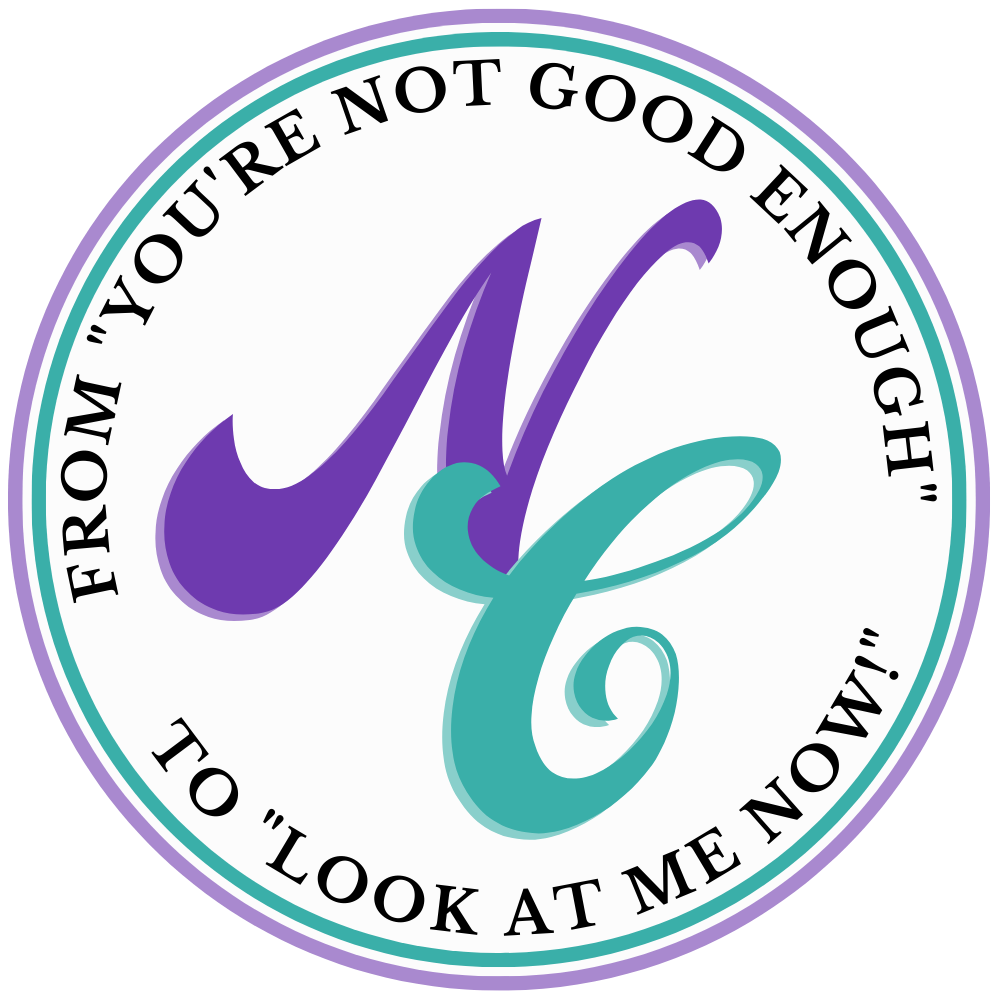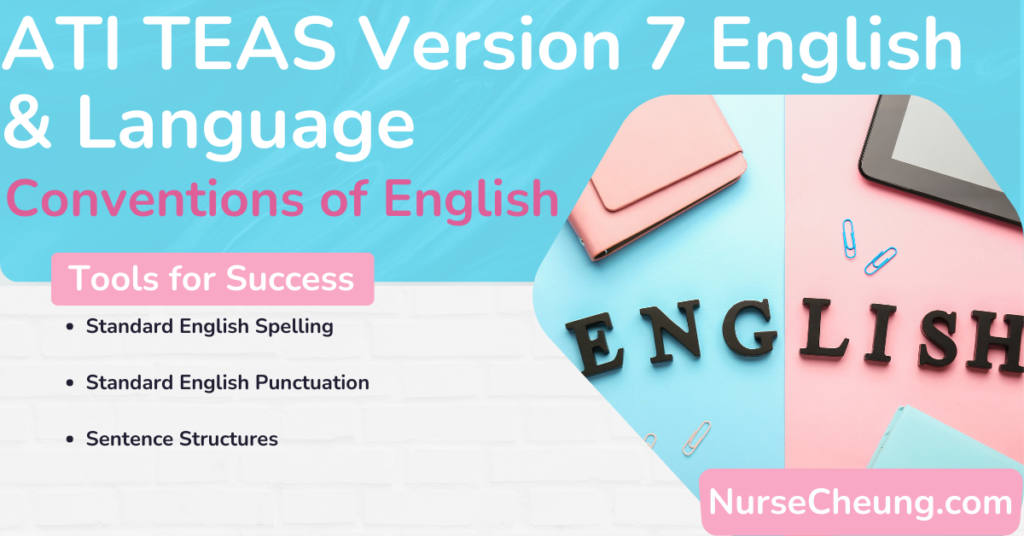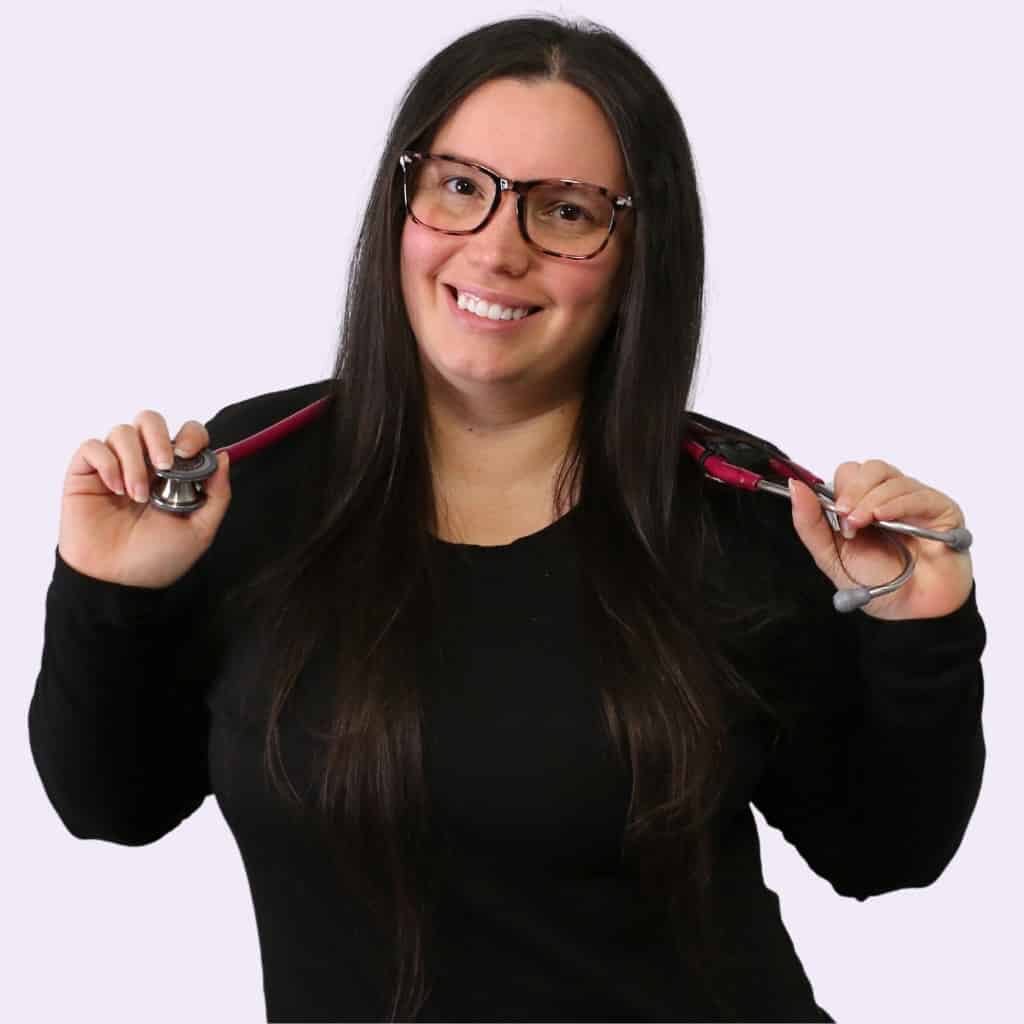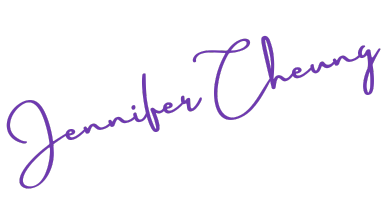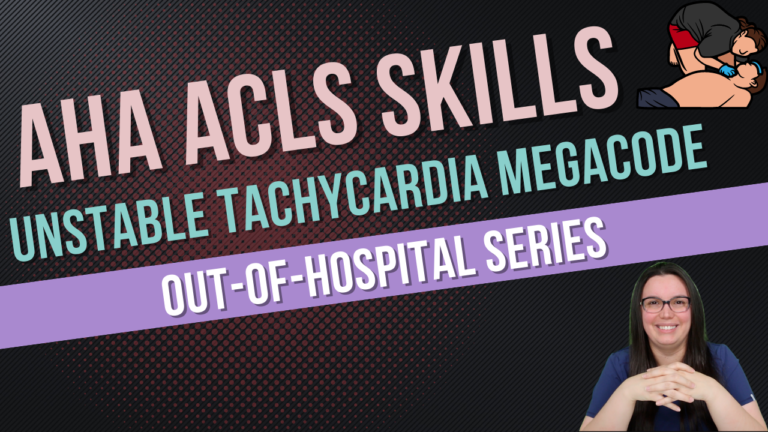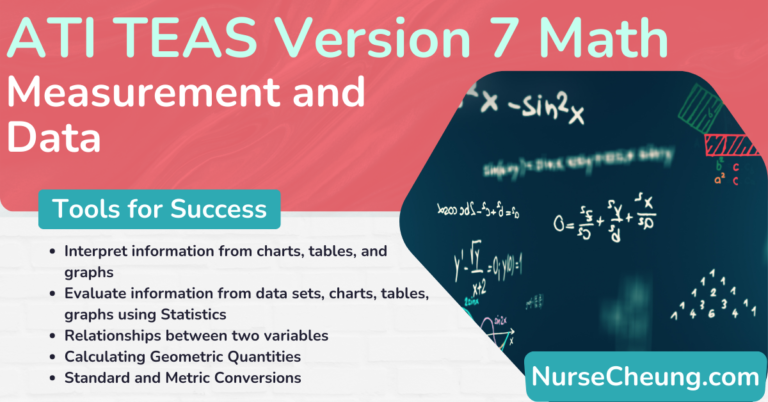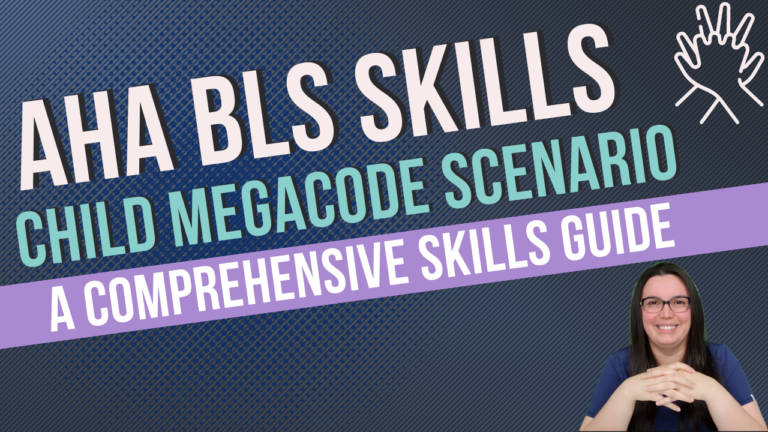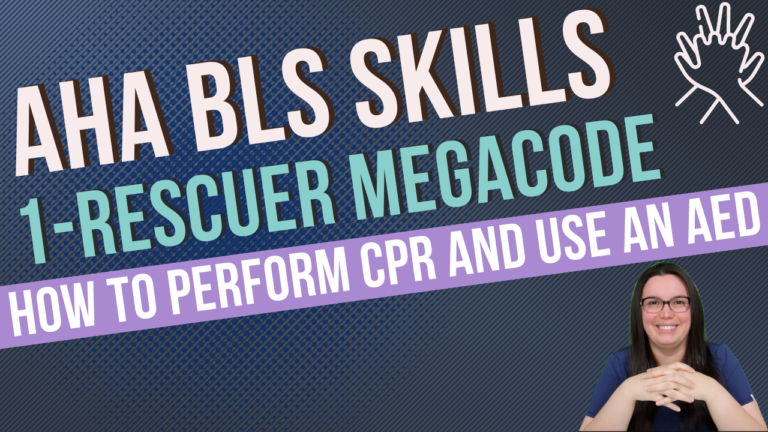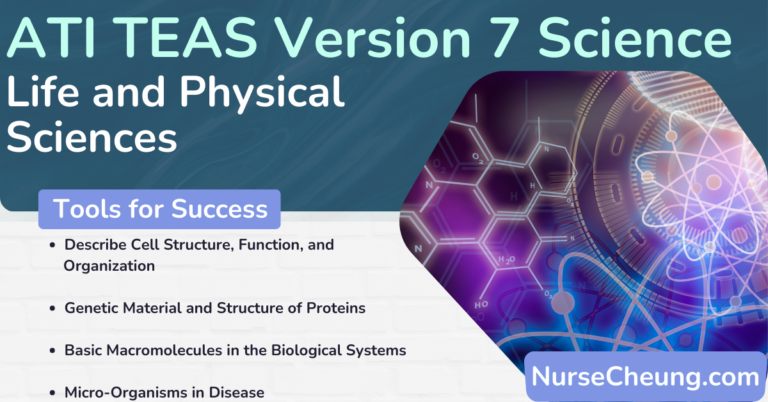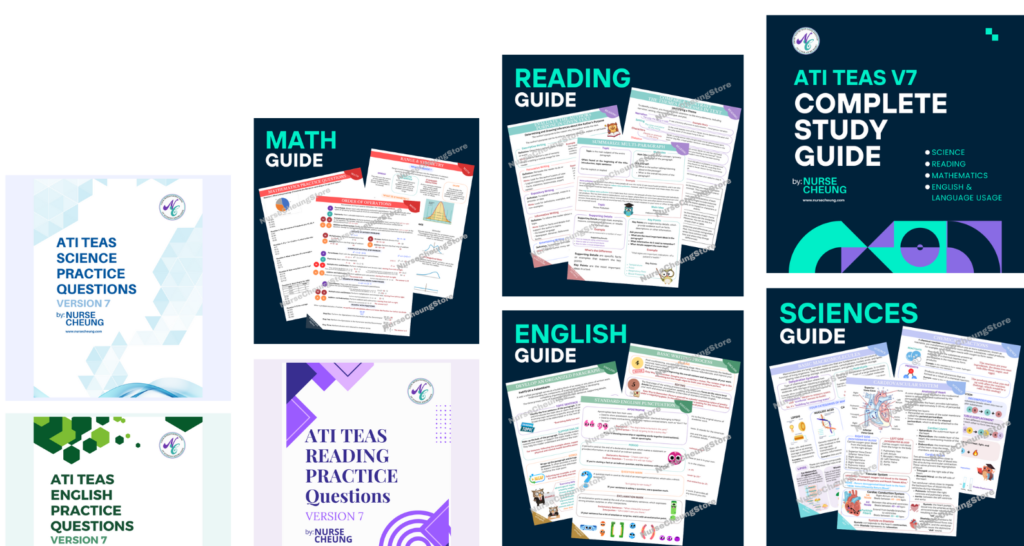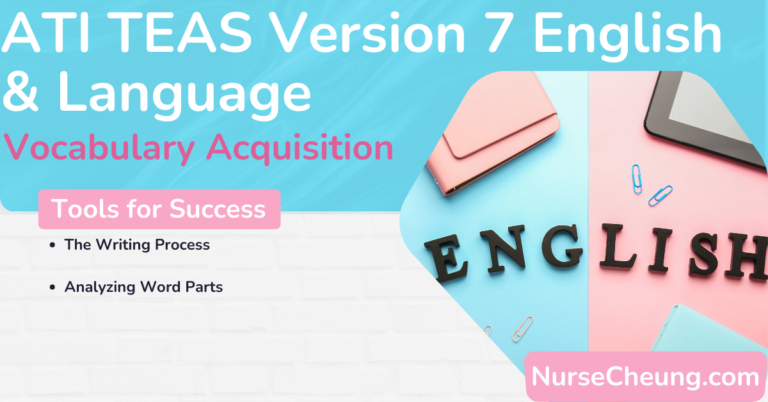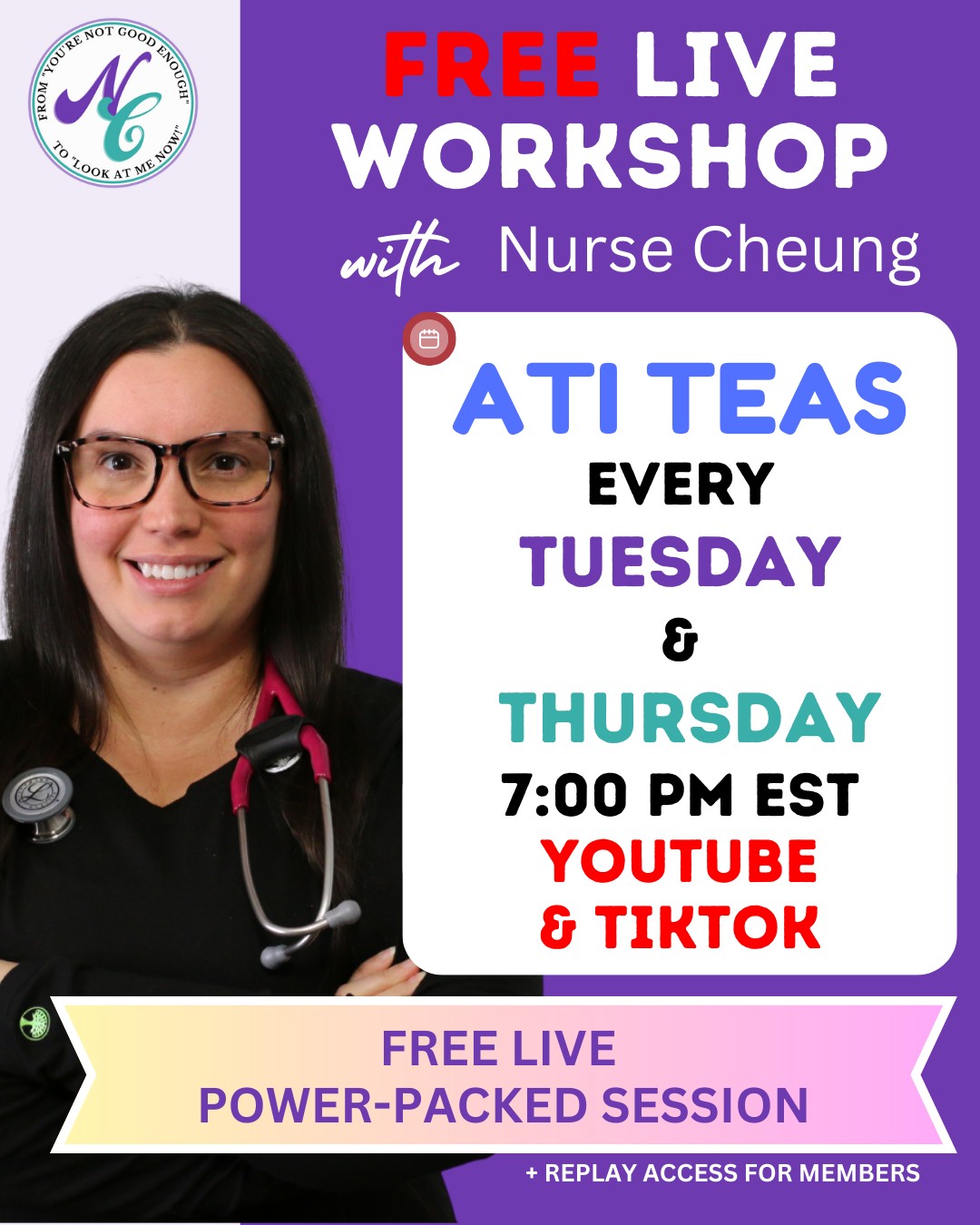If you’re studying for the ATI TEAS exam, you’ll want to be sure to brush up on your English & Language Usage skills. This includes knowing how to use standard grammar and punctuation conventions.
In this blog post, we will discuss some of the most important conventions that you need to know. We’ll also provide practice questions so that you can test your knowledge!
Objectives for Conventions of Standard English
Total scored items on ATI TEAS: 12 questions out of 33
Use Conventions of Standard English Spelling
Spelling Rules
There are many common spelling rules that are taught including “i” before “e” except after “c,” drop the final “e”, double the final consonant, and change the final “y” to “i.”
“I” Before “E” Rule
One of the most common spelling rules is “i” before “e,” except after “c.” This rule can help you when you’re trying to decide between two similar spellings. For example, do you spell it “receive” or “recieve?”
According to the rule, you would spell it “receive” because there is a “c” before the “i.”
Exceptions to this rule include words like “weird,” “height,” and “foreign.”
Drop the Final “E”
Another common spelling rule is to drop the final “e” when you add a suffix that begins with a vowel. For example, the word “love” becomes “loving” when you add the suffix “-ing.”
There are exceptions of when you would keep the “e” when you add a suffix that begins with a consonant. For example, the word “amaze” becomes amazement” when you add the suffix “-ment.”
Double the Final Consonant
You also need to double the final consonant before adding a suffix that begins with a vowel, if the final syllable is stressed. For example, the word “begin” becomes “beginning.”
However, if the final syllable is not stressed, you do not need to double the final consonant. For example, the word “despair” becomes “despairing.”
Change Final “Y” to an “I”
If a word ends in “y” and you need to add a suffix that begins with a vowel, you will change the “y” to an “i.” For example, the word “beauty” becomes “beautiful.”
If a word ends in “y” and you need to add a suffix that begins with a consonant, you do not need to change the “y.” For example, the word “enjoy” becomes “enjoyment.”
Lastly, you do not change “y” to an “i” if the suffix that begins with an “i.” For example, the word “cry” and suffix “-ing” become “crying.”
Rules for Plurals
There are also rules for plurals! To make a word plural, you typically add “-s” to the end of the word. For example, the word “cat” becomes “cats.”
However, if the word ends in “-s,” “-x,” “-z,” “-ch,” or “-sh,” you will need to add “-es” to make it plural. For example, the word “fox” becomes “foxes.”
Sometimes, you will need to change the spelling of the word entirely to make it plural. For example, the word “child” becomes “children.”
There are also irregular plurals that do not follow any rules and you just need to memorize them. For example, the word “person” becomes “people.”
Identifying Homophones and Homegraphs
Homophones are words that are pronounced the same but have different meanings, even if they are spelled differently. For example, the words “they’re,” “their,” and “there.”
Homographs are words that are spelled the same but have different meanings. For example, the word “bass” can refer to a type of fish or the low-pitched range of notes in music.
When you’re taking the ATI TEAS, you need to be able to identify which spelling or meaning is being used based on the context of the sentence.
Let’s take a look at an example:
Question: My dad went out to sea to catch some bass.
In this sentence, the word “bass” is referring to a type of fish, so you would use the spelling “bass.”
Conventions of Standard English Punctuation
Commas
Commas are one of the most commonly used pieces of punctuation and there are several rules for when to use them.
One rule is the Oxford comma, which is used before the word “and” in a list of three or more items.
For example: I went to the store and bought milk, eggs, and bread.
If you don’t use the Oxford comma, it can change the meaning of the sentence.
For example: I went to the store and bought milk, eggs and bread.
In this sentence, it sounds like you bought milk and eggs together and then bought bread separately.
Here are some of the most common rules related to the use of the comma:
- Place a comma before a conjunction in a compound sentence. For example, “I have a big test tomorrow, but I’m not worried.”
- Place a comma after an introductory phrase or clause. For example, “After school, I’m going to the store.”
- Place a comma before and after dependent phrases and clauses or around nonessential elements that interrupt the main clause of a sentence. For example, “The average world temperature, however, has continued to rise significantly.”
- Place a comma between two or more coordinate adjectives describing the same noun. For example, “It was a dark, windy night.”
Indirect Quotations
An indirect quotation is when you report or paraphrase what someone said without using their exact words.
For example, if I said “My mom said that I need to clean my room,” that would be an indirect quotation.
If, however, I said “My mom said ‘You need to clean your room,'” that would be a direct quotation.
The writer must cite the source of the indirect quotation.
Direct Quotations
A direct quotation is when you use the exact words that someone said.
When you use a direct quotation, it is important to use proper punctuation.
Here is an example: Dr. King said, “I have a dream.”
It is also important to cite the source of the direct quotation. If the writer uses another’s words without the quotation marks, the practice is called plagiarism.
Sentence Punctuation Patterns
One of the best ways to improve your grammar and punctuation skills is to become familiar with common sentence patterns.
In order to understance sentence types, it would be helpful to know independent clauses and dependent clauses.
- An independent clause is a clause that can stand alone as a complete sentence.
- A dependent clause is a clause that cannot stand alone as a sentence and must be attached to an independent clause.
Here are some common sentence patterns:
- Simple Sentence: has one independent clause and no dependent clauses. Example: “Life itself is the most wonderful fairy tale.”—Hans Christian Anderson
- Compound Sentence: has two or more independent clauses and no dependent clauses. Example: “It may seem difficult at first, but everything is difficult at first.”—Miyamoto Musashi
- Complex Sentence: has one independent clause and at least one dependent clause. Example: “Until the lion learns to write, every story will glorify the hunter.”—African proverb
Punctuation Examples
Common punctuation questions you may see on the ATI TEAS include apostrophes and end marks.
An apostrophe is a punctuation mark that is used in several different ways. One use of the apostrophe is to indicate possession.
For example, “The cat’s toys are under the bed.” In this sentence, the apostrophe is indicating that the toys belong to the cat.
Another use of the apostrophe is to create contractions. A contraction is a shortened version of a word or phrase.
For example, “I’m going to the store.” In this sentence, the apostrophe is taking the place of the letters “a” and “i” in the words “am” and “I.”
End marks are punctuation marks that are placed at the end of a sentence. The three most common end marks are the period, question mark, and exclamation point.
- The period is used to end a declarative sentence, which is a sentence that makes a statement.
- The question mark is used to end an interrogative sentence, which is a sentence that asks a question.
- The exclamation point is used to end an exclamatory sentence, which is a sentence that expresses strong emotion.
Use Correct Sentence Structures
Clauses, Phrases, and Sentence Types
A clause is a group of related words that contains a subject and a verb.
There are two types of clauses: independent and dependent.
An independent clause is a clause that can stand alone as a complete sentence. For example, I was tired after working all day.
A dependent clause is a clause that cannot stand alone as a sentence and must be attached to an independent clause. For example, I was tired.
A phrase is a group of related words that does not contain a subject or a verb. For example, under the bed.
There are three types of sentences: simple, compound, and complex.
- Simple Sentence: has one independent clause and no dependent clauses. Example: “Life itself is the most wonderful fairy tale.”—Hans Christian Anderson
- Compound Sentence: has two or more independent clauses and no dependent clauses. These clauses are usually joined together by conjuctions such as and, but, or, for, and so. Example: “It may seem difficult at first, but everything is difficult at first.”—Miyamoto Musashi
- Complex Sentence: has one independent clause and at least one dependent clause. Example: “Until the lion learns to write, every story will glorify the hunter.”—African proverb
Parts of Speech
There are eight parts of speech that are identified on the ATI TEAS: nouns, pronouns, verbs, adjectives, adverbs, prepositions, conjunctions, and interjections.
- Verbs are words that express action or state of being. For example, the verb in the sentence “The cat slept on the mat” is “slept.”
- Nouns are words that represent people, places, things, or ideas. For example, the nouns in the sentence “The cat slept on the mat” are “cat” and “mat.”
- Pronouns are words that take the place of nouns. For example, the pronoun in the sentence “She has many chocolates in her pocket” is “she.”
- Adjectives are words that describe or modify nouns and pronouns. For example, the adjective in the sentence “A little boy fell into the river” is “little.”
- Prepositions are words that show relationships between other words in a sentence. Common prepositions are before, since, inside, and after. For example, the preposition in the sentence “You can play video games after you study” is “after.”
- Conjunctions are words that join words, phrases, or clauses. Common conjunctions are and, so, and but. For example, the conjunction in the sentence “I’m studying English and she’s studying math” is “and.”
- Interjections are words that express emotion and are usually placed at the beginning of a sentence. For example, “Ouch!” or “Wow!”
Subjects, Predicates, and Other Sentence Parts
The subject of a sentence is the noun or pronoun that is doing the verb. For example, in the sentence “The cat slept on the mat,” the subject is the “cat.”
The predicate is a sentence or clause that modifies the subject. It can be either a verb or verb phrase. For example, in the sentence “John walked faster than James,” “John” is the subject and “walked faster than James” is the predicate.
Modifiers are words, phrases, or clauses that provide additional information about the subject. For example, in the sentence “John, who is taller than James, walked faster than him,” “who is taller than James” is a modifier because it gives more information about John.
Complement describes words that are needed to complete the meaning of a sentence. For example, in the sentence “The cat is black,” “black” is a complement because it completes the meaning of the sentence.
Direct Objects versus Indirect Objects
A direct object is the noun or pronoun that receives the action of the verb. For example, in the sentence “Jack caught a fish,” “a fish” is the direct object as it is the thing being acted on by the verb.
An indirect object is the noun or pronoun that receives the action of the verb indirectly. For example, in the sentence “I gave my brother a book,” “my brother” is the indirect object as he is receiving the action of the verb (gave) indirectly.
Sentence Diagramming
One way to visually see the parts of a sentence is through sentence diagramming. This is where you draw a line for each word in the sentence and then label the word with its part of speech. For example, the sentence “The children in the preschool nap after lunch” would be diagrammed like this:
Children (subject) in (preposition) the (article) preschool (adjective) classroom (object) nap (verb) after (preposition) lunch (object of preposition).
